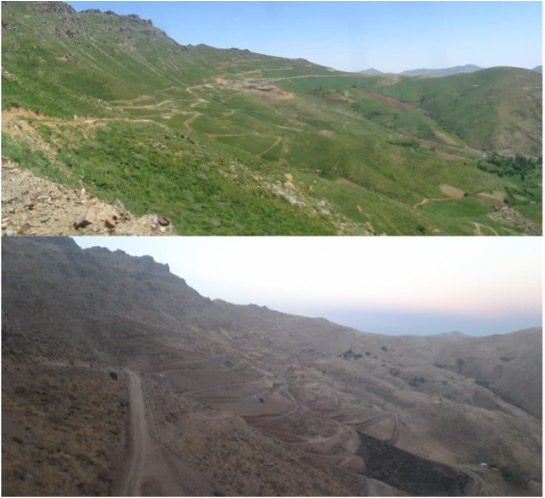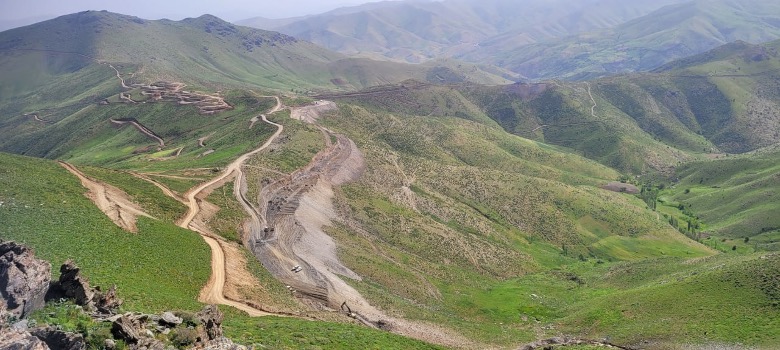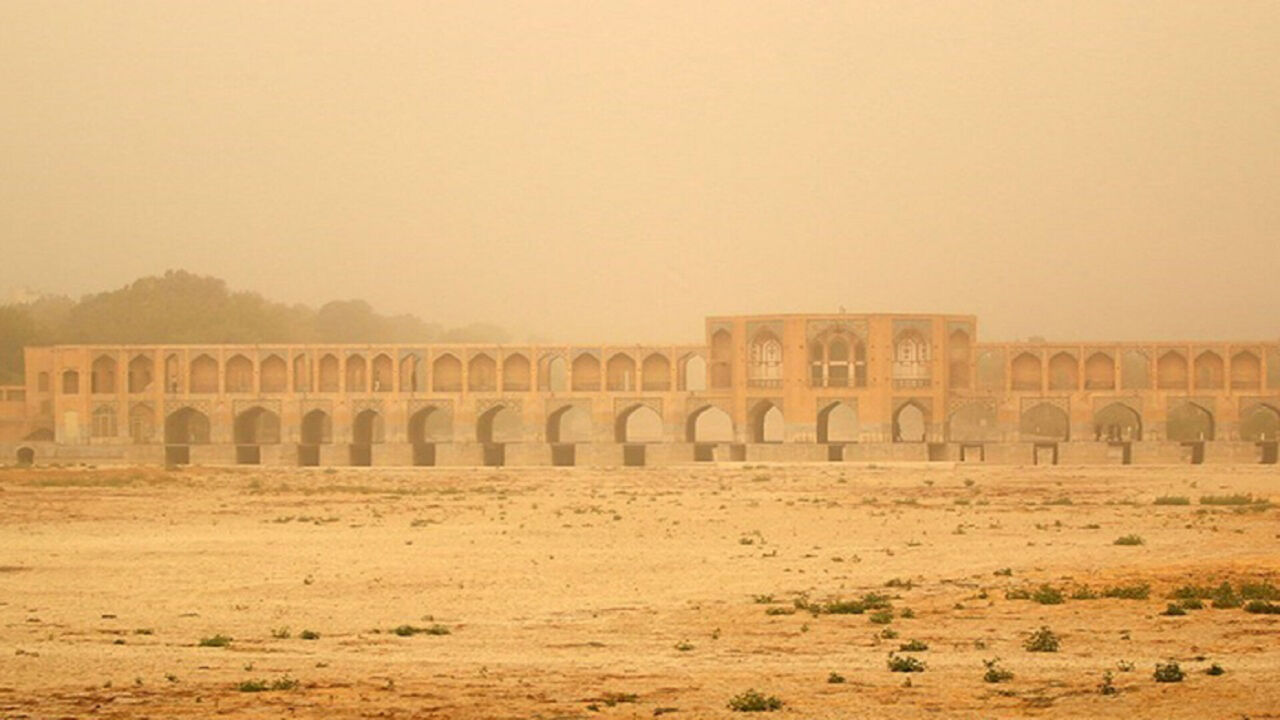Why People in Iran’s Kurdistan Province are Protesting the Mining Industry
Billions of dollars in gold are pulled from the Kurdistan Province in Iran, yet revenues are funneled to the central state budget, and only a fraction of the law-mandated 15% flows back to the region. With unemployment rates at around 13.7% and environmental risks mounting, anger is rising, most starkly in Saqqez, where a protester was recently killed amid unrest over the Qolqoleh mine.
On Monday evening, 14 September 2025, a protester, 23-year-old Mohammad Rashidi, was reportedly shot dead during a rally organized by residents of Pir Omaran and Karrawyan villages near Saqqez against gold mining activities around Qolqoleh.Four other protesters, Mohammad Amin, Hemin Rashidi, Ramyar Rashidi, and Adel Rashidi, were injured by the Iranian security forces.
As this incident coincided with the third anniversary of the so-called ’Jin, Jiyan, Azadî’ uprising, amid state concerns about a possible resumption of protests, the Iranian security authorities transferred the injured to a hospital in Bana (Baneh), away from Saqqez.
A day after the incident, speaking to domestic media outlets, the chief judicial official for the Kurdistan Province stated that the case was filed at the Saqqez Prosecutor’s Office. While officials have not explained why the protesters gathered at the mine, the Amargi talked to the local sources and was able to confirm that the gatherings were triggered by illegal plans to construct a road through the farmlands, causing ecological harm as a result of the gold mining activities. Following a short confrontation with the protesters, Ata Askari, one of the mine guards, opened fire on the protesters, resulting in Mohammad Rashidi’s death.
Rashidi’s family was immediately met at the hospital in Bana by a parliamentary representative of Saqqez. He was accompanied by the city’s governor, who pledged to address the Rashidi family’s concerns, calling for patience.
Two weeks later, in a speech at Iran’s parliament session, the representative of Saqqez raised his concerns over the operation of the mine and asked for an assessment of the ecological and health effects on the local population.
Six years of ongoing environmental and social protests
The recent incident is considered as a notable example of the ongoing conflicts between local populations and mining projects in the Kurdistan and West Azerbaijan Provinces in Iran. Since it began in January 2018, the Qolqoleh mine project has continuously triggered protests because of its harmful ecological and societal impacts. The operation rights of the mine, located 35 kilometers southwest of Saqqez, are held by the Kurdistan Gold Mines Development Company. From the start, the planned site for the processing plant sparked controversy. At first, a plan was set to build a factory upstream of the Saqqez drinking water station, the Cheraghwais Dam. The authorities were forced to move the factory downstream of the dam after being opposed by civil society, the Department of Environment, and the regional water company.
In recent years, several public campaigns have called for an end to the mining operations. More than 18,000 people signed an online petition asking for the closure of the Qolqoleh mine…
In recent years, several public campaigns have called for an end to the mining operations. More than 18,000 people signed an online petition asking for the closure of the Qolqoleh mine, warning that such a project, like the Zarshouran and Agh-Dareh mines in West Azerbaijan, puts the water and soil of the region at risk of heavy metal contamination.
The provincial government officials, based on Article 24 of the mining law, have not achieved any permits for mining operations, they also issued exploration and extracts permits for the Qolqola mine without authorization from Kurdistan’s provincial natural resources office, which is a requirement according to Article 24 of the Mining Law (Bis).
Kurdistan holds the majority of Iran’s gold, but gains little
Kurdistan is rich in minerals such as gold and iron. It is a major agricultural region, with more than 660,000 hectares of wheat fields accounting for nearly 10 percent of Iran’s total wheat production.
Despite its resources, the Province lags in development. Its Development Index was 0.728 in 2022, below the national average, and unemployment stood at 13.7%in 2023, the second highest in western Iran and nearly double the national rate of 7.8%.
Geological estimates indicate that the Qolqoleh mine holds 25 million tons of gold ore, with an average grade of 1.2 grams per ton. This amount of gold equals 30 tons of gold, worth several billion dollars at today’s price. Sarigoni mine, another nearby mine, located in Qorwa (Qorveh) city, contains 41 million tons of gold ore, with a potential to produce 40 tons of gold. Approximately six tons out of Iran’s total production capacity of 7.5 tons of gold are produced by these two gold mines in Kurdistan and other gold mines in West Azerbaijan.
Kurdistan is regarded as a major hub of gold production in Iran, however, neither the local population nor the region benefits from the wealth generated by the gold production
Kurdistan is regarded as a major hub of gold production in Iran; however, neither the local population nor the region benefits from the wealth generated by the gold production. Iran’s mining law requires the government to return 15% of production profits to the provinces where the mines operate, to be spent on infrastructure and compensation for damages. However, official reports indicate that the profits returned to Kurdistan are less than the legally provided share of profits. In recent years, only a small amount of the profits, which were legally approved, have been paid back. Besides that, the revenues generated from the mining production do not return to the provinces where the mines are located. Instead, they mostly flow into the government’s Central Treasury or the Central Bank. As a result, the regions in which people face the consequences of resource extraction see no notable economic profits. On the contrary, complex chemical processes in gold production (such as the use of cyanide and mercury) lead to serious damage to soil, water resources, and local ecosystems.
At a conference attended by the country’s labor minister, parliamentary representative of Qorwa and Dewilan (Dehgolan), Rasoul Sheikhizadeh, blamed the government for failing to provide investments in Kurdistan.

Sheikhizadeh stated that if such resources existed in other provinces, they would be fully utilized for the benefit of the people: “Kurdistan holds 50 percent of the country’s gold, yet the gold ends up in places like Kazakhstan”, highlighting the high rates of unemployment and migrant labor. “Meanwhile, more than 10,000 workers from Kurdistan work in Tehran’s greengrocer markets under unjust contracts. It is a shame that our young people leave their home to work in Tehran, while gold is extracted from right under their feet.”
He called for investments in the mining and agriculture sectors to keep the added value in the Province.
Ammar Goli
Ammar Goli is an investigative reporter whose work focuses on the relationships between mafia groups and totalitarian governments, and on the Kurdish issue in the Middle East. He has contributed to various media outlets, including BBC Farsi, Iran International, and Radio Ferda, in Persian, Kurdish, and German, drawing on his deep understanding of the political and social dynamics of the region. At The Amargi, he writes specifically about East Kurdistan and Iran, offering valuable insights and analysis of current events.




